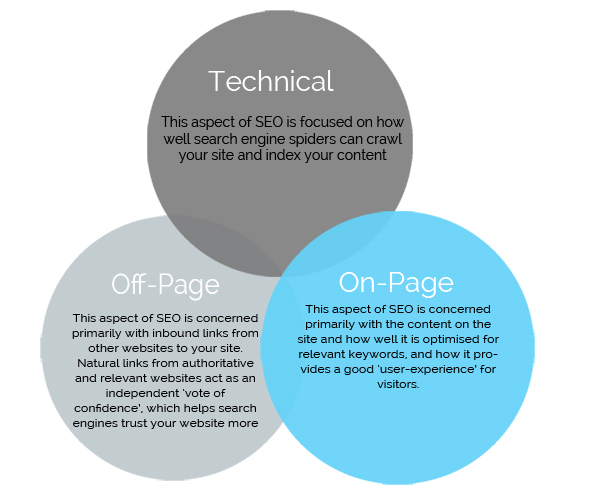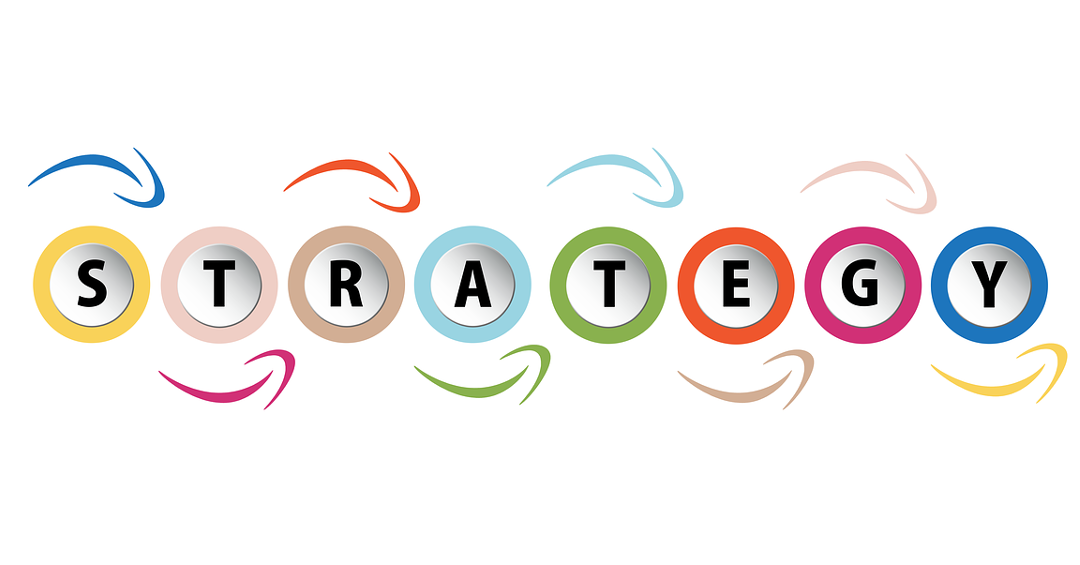Don’t you hate jargon? The website business and particularly SEO (oops, sorry, search engine optimization) are full of it. When I say strategic search engine optimization or strategic SEO, I really need to explain what I mean, right?
First, search engine optimization is a whole broad field of doing things to your website – structure, code, on page copy, images, and so one – that will cause your website to rank high in the SERP (search engine results page). In other words, you want your website to show up on the first page when someone enters a Google search pertaining to what you offer and that requires some SEO strategy.
What Google Wants to See: The Big Picture
In a nutshell, this is what Google wants: useful content for the reader that is easy to access through links and to scan or read easily. Google loves multimedia – images and video.
The acronym E-A-T, which stands for Expertise, Authoritativeness, and Trustworthiness, is the reported framework that Google raters use to assess content creators, webpages, and websites as a whole.
When Google’s search spider crawls your site, looking for fresh content (sometimes depending on your sitemap settings), it indexes your new pages and prepares them for search users.
After your pages are added into its vast index to be returned in search results when relevant search queries are triggered, Google uses several algorithm factors to determine where those pages will rank.
Where your website appears in the rankings and for what key words or search terms has everything to do with strategic search engine optimization.
Elements of SEO to Keep in Mind
The how and why a page comes up revolves around the almighty Google algorithms. So, does an SEO expert know what that algorithm is and simply applies what they know? Well, kinda yes, but really no. Google changes that algorithm daily, up to 10 times. What’s more, Google says there are over 200 ranking signals each with up to 50 variables each. Does that make your head spin?
Since this is not intended to be an advanced course on SEO, or even a beginner course, I can at least break strategic SEO down to basics so you can better understand the anatomy of the process.
Three general categories of SEO, each of which overlaps the other, are technical SEO, on-page SEO, and off-page SEO.

Technical SEO
Technical SEO is focused on how well the search engine spiders can crawl your side and index your content.
Thankfully, WordPress websites in general are built with a structure that is inherently easy for search engine spiders or bots to crawl. Some technical SEO actions would include overlap with On-Page SEO in the proper utilization of title tags, meta descriptions. In building a site we make sure we have a site map that is then submitted to the search engines (Google, Yahoo, Bing, Yandex, for example).
I might include page speed (time for the page to load on the screen), mobile responsiveness, choice of hosting plan environment and even security as technical SEO.
On-Page SEO
On-page SEO (also known as on-site SEO) refers to the practice of optimizing web pages to improve a website’s search engine rankings and earn organic traffic.
In addition to publishing relevant, high-quality content, on-page SEO includes optimizing your headlines, HTML tags (title, meta, and header), and images. It also means making sure your website has a high level of expertise, authoritativeness, and trustworthiness.
Some other tasks include designing pages that load quickly with optimized, compressed media. (Lots of other factors here to tweak page speed, which I consider more technical SEO

Off-Page SEO
“Off-Page SEO” refers to all of the activities that you and others do away from your website to raise the ranking of a page with search engines.
Though many people associate off-page SEO with link building, it goes beyond that. Many activities that don’t result in a standard link on other sites are important for off-page optimization.
Off-page SEO is the act of optimizing your brand’s online and offline footprint through the use of content, relationships, and links to create an optimal experience for prospects and search engine crawl bots. It typically leads to gradual increases in positive brand mentions, search rankings, traffic to your site, and conversions.
Strategic Search Engine Optimization
I define strategic engine optimization as the holistic approach to both on- and off-page SEO where we start with the needs and interests of the audience first. What do you offer them? What problem do you solve? What would they be searching for on Google that would make them very happy to have found your website or your particular page or blog article?
It is essentially a sales conversation at the point where we are asking “How can I help you?”
Website content is written and designed in a way that answers the various ways we can help or solve a problem along with educational questions that someone might ask to better understand what we offer. When the prospect of customer asks a question (types in a Google search) we have relevant content that pops up on the search results page because it has been proven useful and authoritative.
Knee-deep in Strategic SEO
The actual work involved in strategic SEO would largely be in the realm of planning out and publishing useful, authoritative content, promoting it through social media, email campaigns, and PR/outreach that produce traffic and referring links.
Are you curious about what strategic search engine optimization could do for your website? Schedule an appointment for an SEO site audit. We will review your website and look for opportunities to grow your traffic by improving and optimizing what you have now and look at a future strategy for growth.
